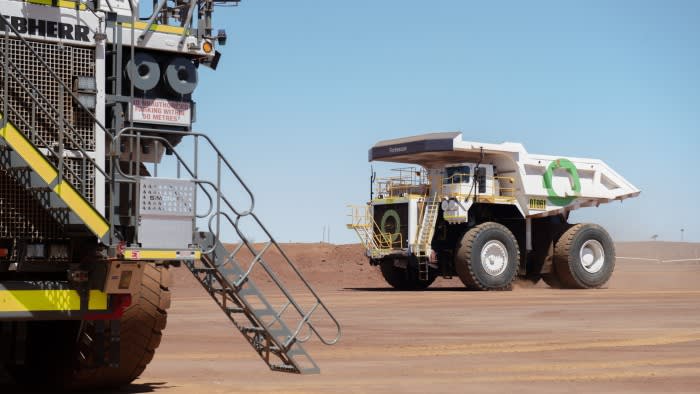Unlock the Editor’s Digest for free
Roula Khalaf, Editor of the FT, selects her favourite stories in this weekly newsletter.
Andrew “Twiggy” Forrest, Australia’s richest man, is slowing down the push to transform his iron ore empire Fortescue into a green hydrogen powerhouse, unveiling 700 job cuts and dropping its ambitious 2030 production commitment.
Fortescue, whose billionaire executive chair Forrest has been a leading proponent of the clean fuel, has come to realise its ambition for 15mn tonnes of green hydrogen per year — enough to remove three-quarters of the fossil fuels used in the production of ammonia for fertiliser — is unrealistic, according to a person familiar with its thinking.
The company is still aiming to produce 15mn tonnes of green hydrogen eventually, but it has cast away on a commitment to do so by 2030 while announcing headcount reductions equivalent to 4.5 per cent of its workforce.
“The company must continually evolve to ensure it remains lean, is best positioned to deliver on its strategy and generate the maximum value for shareholders,” Fortescue said in a statement. Forrest is its founder and largest shareholder, owning more than a third of the company.
In recent years, Forrest has been one of the most bullish voices for green hydrogen, a clean fuel generated using renewable energy and water that could displace fossil fuels in heavy industry and transportation.
However, the company has joined an increasing number of clean energy producers reining in plans for green hydrogen in recent months, as the initial hype around the technology is tempered by high costs and slow demand.
In Europe, Engie, the French state-backed utility and Norway’s Statkraft, the region’s largest producer of renewable electricity have both delayed plans for new green hydrogen capacity. Meanwhile, the EU’s audit body has said the bloc’s targets were unrealistic.
The group last year merged its nascent hydrogen division Fortescue Future Industries with the legacy iron ore business Fortescue Metals Group.
Since then, the business has been roiled by turmoil after a spate of high profile executive departures, caused by disagreements over green ambitions.
Fiona Hick, the former chief executive of the metals division, left last September after just six months in the job. Her chief financial officer, Christine Morris followed, while Guy Debelle, who joined from the Reserve Bank of Australia, left after a year in the hydrogen division.
The redundancies announced on Wednesday would be offered by the end of July and affect staff globally, although Fortescue said that they would not be limited to the clean energy division.
Fortescue has narrowed its focus to four green hydrogen projects in the US, Australia and Brazil, where clean energy is more readily available. Of those, the two projects of significant scale have yet to reach final investment decisions.
In a separate statement to the Financial Times, Forrest reiterated the company’s commitment for carbon neutrality by 2030, which is significantly more ambitious than industry peers such as BHP and Rio Tinto.
“Fortescue is absolutely resolute in our commitment to be the world’s leading green technology, metals and energy company with a laser focus on achieving real zero by 2030,” he said. “In order to do this, we must continually evolve to make sure we remain lean and impactful.”
The company would focus on developing green hydrogen in other parts of the world “once it gets its act together” in terms of developing renewables, Forrest added.
Before the announcement, which was made after the market close, shares in Fortescue dropped 1 per cent on Wednesday in Australia, taking the stock price losses this year to 24 per cent.


